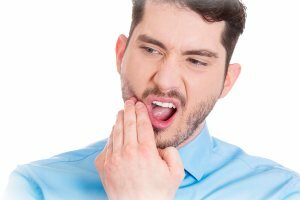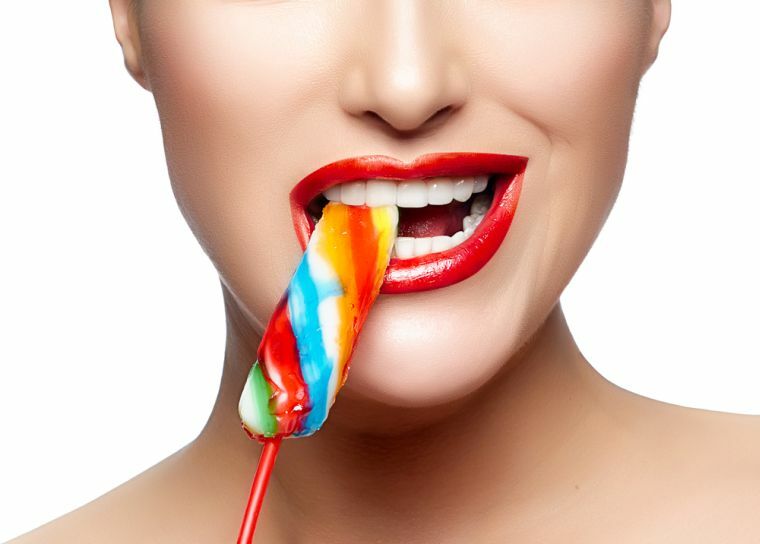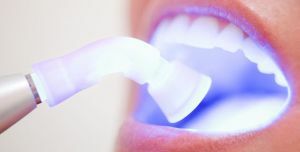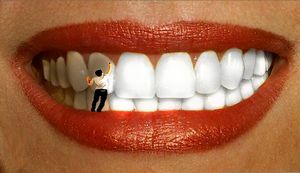 Today, the most popular dental procedure is teeth whitening, but not always without consequences. If teeth are hurt after bleaching, the problem should be looked for in an incorrectly chosen method, mistakes made during the procedure and in others, but on the condition that the hypersensitivity persists for a long time.
Today, the most popular dental procedure is teeth whitening, but not always without consequences. If teeth are hurt after bleaching, the problem should be looked for in an incorrectly chosen method, mistakes made during the procedure and in others, but on the condition that the hypersensitivity persists for a long time.
Regardless of the chosen method, any effect on the enamel leads to its destruction, even the most insignificant, so it is better to choose safer methods.
Contents
- Side effects after whitening procedures
- How to reduce pain and reduce sensitivity?
- Preliminary stage - preparatory
- Stage two - choice of safe method
- Stage three - oral care after the fact
- Useful recommendations
Side effects after whitening procedures
Of course, when you start teeth whitening, you want to see a white smile and not something else. But the side effects are difficult to avoid:
- after whitening significantly increases the sensitivity of teeth, hot, cold and other is felt quite acutely;
- marked irritation of the gums;
- patients can complain that they have a bad toothache, this is the most unpleasant side effect.

In order to avoid such consequences, it is better to use methods that are more sparing.
The most common side effect that occurs after teeth whitening is hypersensitivity. All temperature changes are sharply felt, which significantly complicates the process of food consumption. 
The increase in sensitivity is due to the penetration of active oxygen into the enamel structure. Since oxygen molecules are often trapped in dentinal tubules of nerve endings, unpleasant sensations can persist for several days, no more. The sensations become more acute at the time of the action of the temperature stimuli.
Also, after a few hours after the procedure, there may be a painful syndrome. And the pain can be both barely noticeable, and noisy cutting. This reaction is associated with the penetration of the cleanser to the nerves of the tooth, often a toothache occurs after bleaching with hydrogen peroxide.
In addition, the cause of unpleasant sensations is dehydration of the tooth, which leads to a prolonged and excessive thermal effect.
How to reduce pain and reduce sensitivity?
To minimize tooth sensitivity and reduce the painful period after bleaching, start with the preparatory procedures.
Preliminary - preparatory phase
It is necessary to prepare in advance for the bleaching procedure by carrying out certain activities:
- Approximately 10 days before the expected bleaching, you need to brush your teeth with a desensitizing paste three times a day.
 It is these pastes that can block pain signals that can come to the nerve of the tooth. You will also need to use a toothbrush with soft bristles. It is important to adhere to the proper cleaning technology( movements not back and forth, but circular for 3 minutes).
It is these pastes that can block pain signals that can come to the nerve of the tooth. You will also need to use a toothbrush with soft bristles. It is important to adhere to the proper cleaning technology( movements not back and forth, but circular for 3 minutes). - A desensitizing agent should be applied to the surface of the teeth, and afterwards rub it. After the specified time, rinse the mouth with water.
- Preparation for bleaching involves the purchase of special capsules, which are filled with a desensitizing agent. Before the procedure, in about half an hour, they need to be filled with a means that reduces sensitivity, and then used for the intended purpose. After the specified time, the remedy is removed from the surface of the teeth. After that, a whitening agent is applied.
- In addition, you can use an anesthetic. Before the procedure, about an hour, you need to use an anti-inflammatory drug, which will minimize the toothache after the procedure.
Step Two - Selecting the Safe Method
Today, there are a number of safe bleaching methods and methods that you can use without worrying about toothache and other negative consequences. Among such methods there are both professional and recipes of traditional medicine.
Safe professional bleaching methods include: 
- method, implying the use of a gel activating the light beam - laser bleaching;
- use of halogen light - photobleaching.
Also, there are a number of safe folk bleaching products:
- bleaching with lemon peel( rubbing enamel with rye no more than once a week);
- use of tea tree oil( brushing your teeth with oil for a month);
- whitening berries( gruel is applied to the enamel and aged for 5 minutes).
Despite the fact that many methods are quite effective, their security is often questioned. Side effects can appear with the use of such professional methods:
- oxygen bleaching, implying the effect on the enamel of peroxide compounds;
- technology Air Flow, where the impact on the teeth have small abrasives and water;
- also considers chemical whitening to be unsafe, using a gel with active substances.
The use of many traditional bleaching products can also be accompanied by discomfort:
- using hydrogen peroxide;
- application of soda as a cleaning agent;
- application of activated charcoal for cleaning teeth.
Stage three - oral care after the fact
To ensure that the result of whitening is kept as long as possible and external stimuli do not aggravate the situation, it is recommended that the following rules be followed after the procedure:
- it is not necessary to use cold or hot drinks to avoid additional discomfort due to increased sensitivity of teeth;
- for oral care needs to use a dental floss and a brush with soft bristles( so as not to spoil the enamel, the movements should be circular);
- an important process is the remineralization of teeth, for this purpose it is necessary to use means including fluorides that help to prevent the occurrence of pain;
- used chewing gum should not include sugar, after the procedure with a period of 10 minutes you need to use the whole pack, so you can reduce the sensitivity after teeth whitening;The
- procedure should not be performed more often than once a year, even if home remedies are used according to the type of cap, methods involving the use of fruit can be used more often;
- excessive sensitivity should not bother for more than two days, otherwise consultation with a specialist is required.
Useful recommendations
First of all, you need to remember that in order to keep your teeth as healthy and beautiful as possible for a long time, in no case should  neglect personal hygiene. A standard kit should consist of toothpaste, brush and floss. Thus, it is possible to prevent the formation of stains on the enamel and to facilitate the rapid removal of plaque.
neglect personal hygiene. A standard kit should consist of toothpaste, brush and floss. Thus, it is possible to prevent the formation of stains on the enamel and to facilitate the rapid removal of plaque.
Sensitization of teeth after bleaching is a normal reaction, provided that it lasts not for long, not more than a few days. If after the expiration of this time the condition did not return to normal, then the soreness should at least decrease. Another option is unacceptable and requires the intervention of a professional. A prolonged painful reaction may indicate damage to the enamel during bleaching or the presence of caries, which is often the cause of discomfort.
As for the toothache resulting from the use of some whitening technologies, it is also not uncommon, but as with the case of hypersensitivity, this reaction should last no more than two days. Otherwise, it can be evidence of disease or serious damage to the enamel. If no pathologies are observed, then the intensity of the pain syndrome by the evening should significantly decrease.
Today is not uncommon, and another problem is the need for constant bleaching. Often this applies to people with bad habits and those who drink tea and coffee in large quantities. If there is a similar situation, then you need to contact another specialist.
Do not forget that whitening is a procedure that causes addiction. And the dependence can be not only physical, but also psychological. That is why it is necessary to adhere to the recommendations accurately, and in any case not to implement it more often than permitted.
